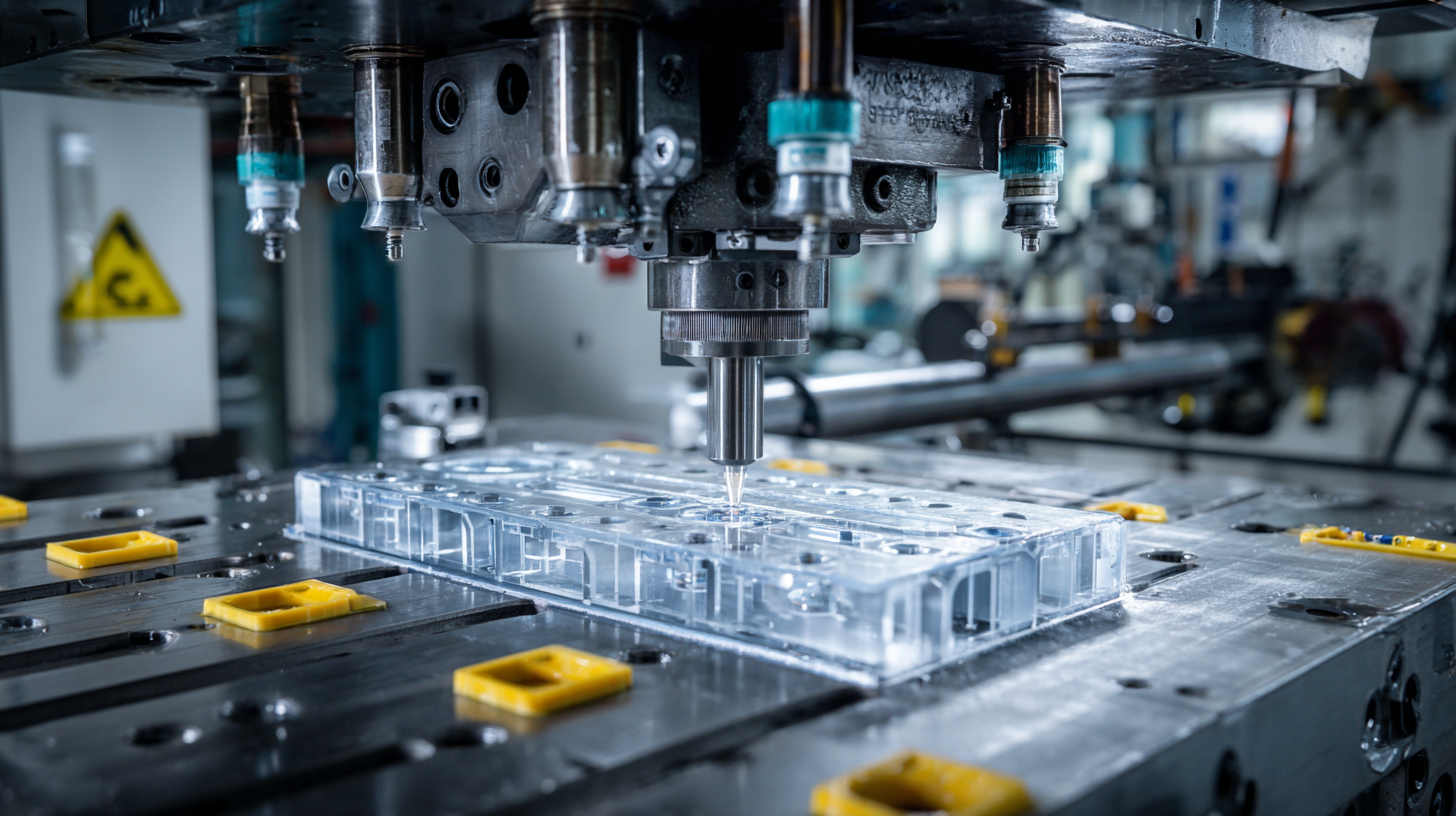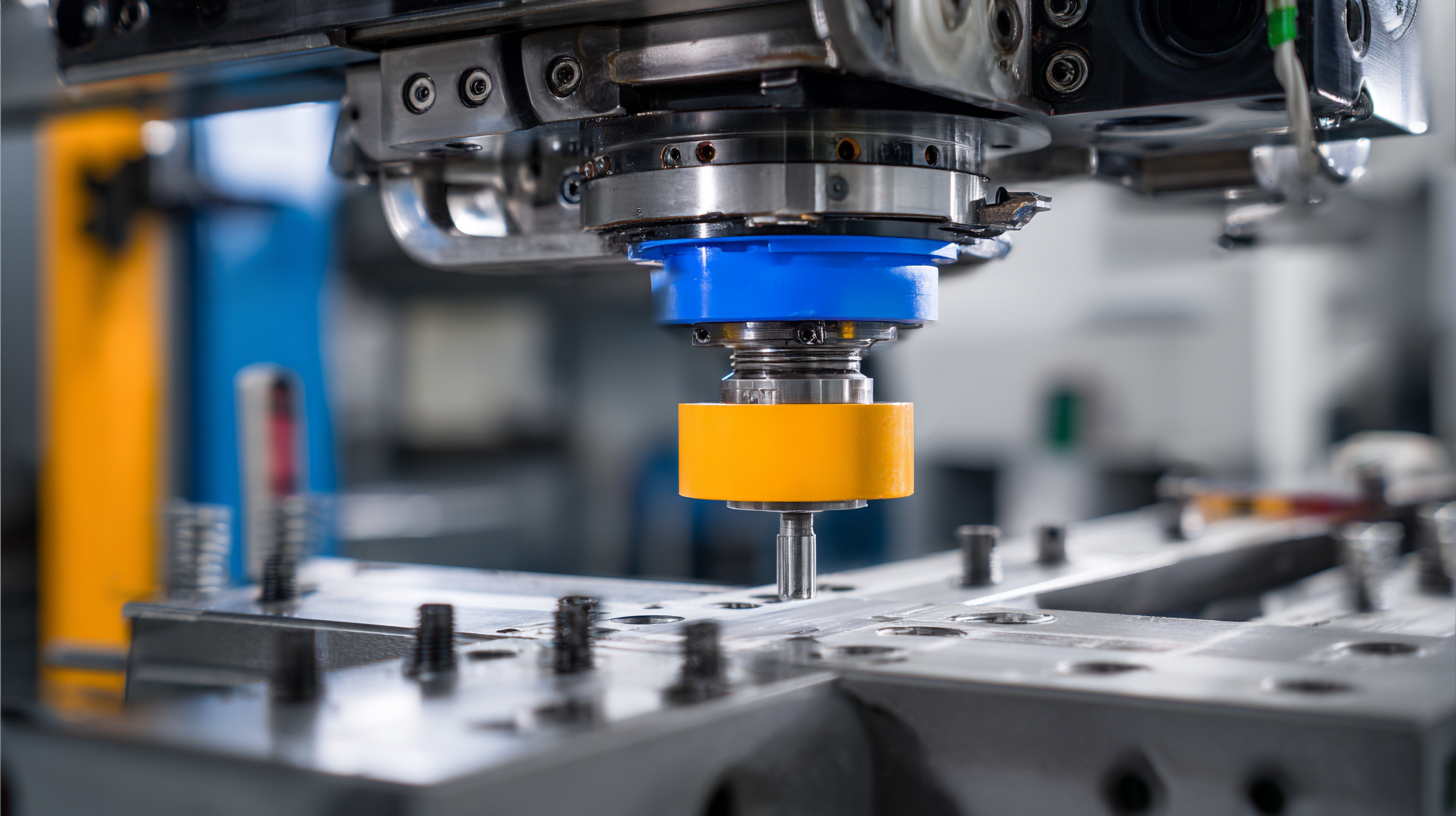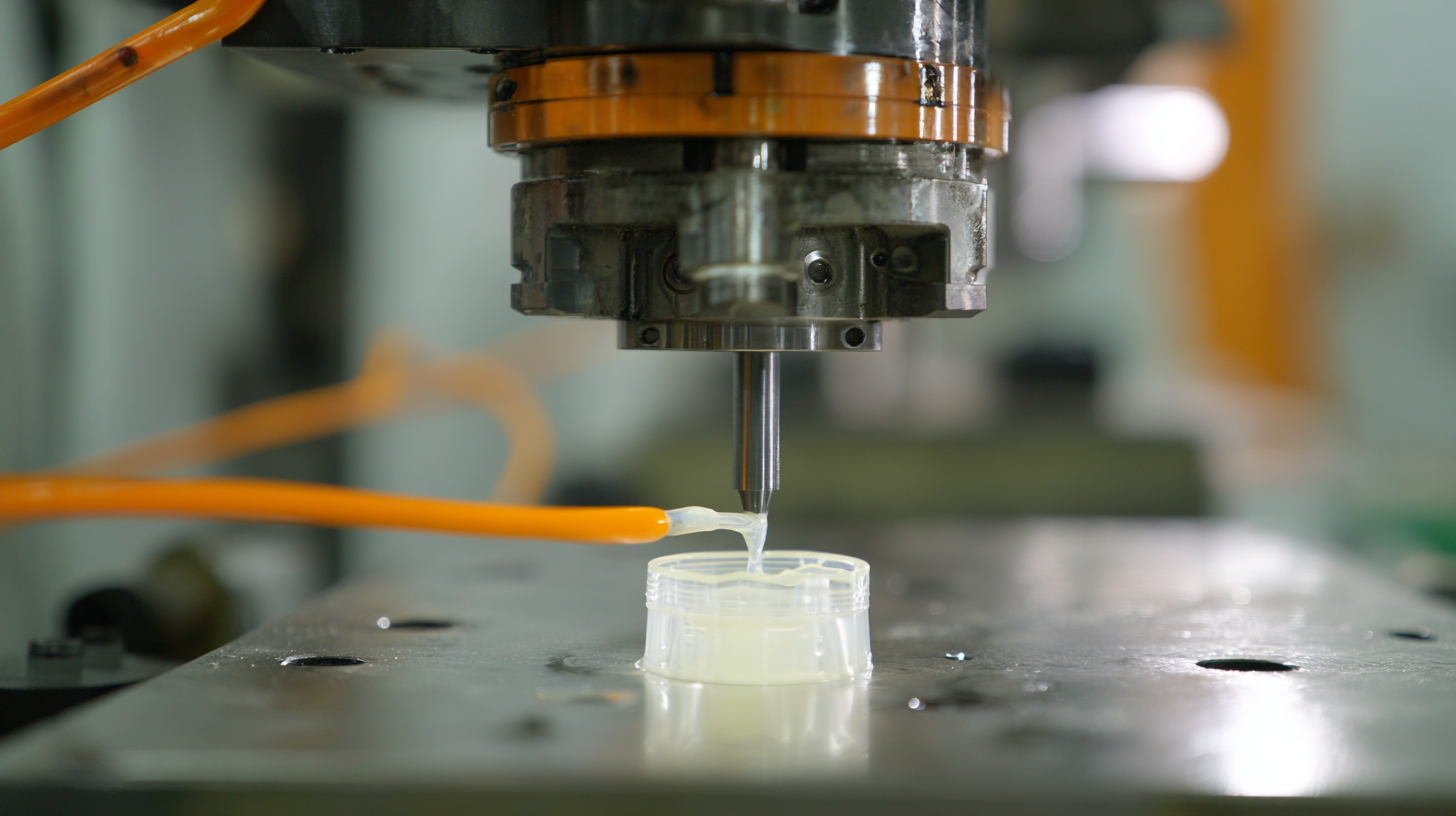7 Best Overmolding Injection Molding Techniques for Enhanced Product Durability
In today's competitive manufacturing landscape, the demand for durable and efficient products has never been higher. According to a recent study by Grand View Research, the global injection molding market size is expected to reach USD 335.4 billion by 2027, driven by the increasing need for lightweight and high-strength components across various industries, including automotive and consumer goods.

One of the innovative techniques gaining traction in this domain is overmolding injection molding, which allows manufacturers to enhance the durability and functionality of their products by combining two or more materials in a single molding process. This technique not only improves product longevity but also offers design flexibility, allowing for the integration of soft-touch grips or seals that enhance user experience.
As we explore the seven best overmolding injection molding techniques, it becomes evident that these methodologies play a pivotal role in meeting the evolving demands of consumers while maintaining high standards of quality and performance.
Understanding Overmolding: Definition and Benefits
Overmolding is an advanced manufacturing technique that involves applying a layer of material over an existing substrate, such as plastic, metal, or rubber, to create a single, cohesive part. This process not only enhances the aesthetics of the final product but also improves its functional attributes. With overmolding, manufacturers can combine materials with varying properties, such as flexibility and rigidity, resulting in superior products that are both durable and lightweight.
The benefits of overmolding are substantial. Firstly, it significantly increases the durability of products by creating a strong bond between the two materials, ensuring they can withstand wear and tear over time. Additionally, overmolding can lead to cost-effectiveness in production by reducing the number of assembly steps; components made in one piece eliminate the need for adhesives or mechanical fasteners. Furthermore, the technique allows for enhanced grip, comfort, and insulation, making it particularly popular in industries such as consumer electronics, automotive, and medical devices. By leveraging the advantages of overmolding, manufacturers can design products that meet the evolving demands of consumers while maximizing efficiency in their production processes.
7 Best Overmolding Injection Molding Techniques for Enhanced Product Durability
| Technique | Material Compatibility | Applications | Benefits |
|---|---|---|---|
| Insert Overmolding | Thermoplastics, Metals | Automotive, Electronics | Improved grip, protection, and aesthetic appeal |
| Co-injection Molding | Multiple Plastic Types | Consumer Goods, Packaging | Cost-effective, multi-material functionality |
| Single Shot Overmolding | Rubber, Soft Plastics | Medical Devices, Tools | Seamless, stress-free assembly |
| 2-Shot Molding | Hard and Soft Plastics | Electronic Housings | Enhanced durability, reduced part counts |
| Blow Overmolding | Polyethylene, PET | Bottles, Containers | Sustainability, lightweight designs |
| Thermal Overmolding | Thermosetting Plastics | Heavy-Duty Equipment | Superior thermal properties |
| Rotational Overmolding | Flexible Materials | Automotive Interiors | Complex shapes and designs |
Key Materials Used in Overmolding Injection Techniques
 Overmolding injection techniques have become essential in enhancing the durability of products across various industries. Key materials utilized in these processes include thermoplastics like poly(lactic acid) (PLA) and poly(ethylene terephthalate) (PET), which offer unique properties such as lightweight and high strength. Recent research highlights the development of self-reinforced composites, leveraging the inherent properties of PET by direct reinforcement during the overmolding process. These composites not only optimize stiffness and toughness but also improve heat resistance, making them ideal for demanding applications in automotive and aerospace sectors.
Overmolding injection techniques have become essential in enhancing the durability of products across various industries. Key materials utilized in these processes include thermoplastics like poly(lactic acid) (PLA) and poly(ethylene terephthalate) (PET), which offer unique properties such as lightweight and high strength. Recent research highlights the development of self-reinforced composites, leveraging the inherent properties of PET by direct reinforcement during the overmolding process. These composites not only optimize stiffness and toughness but also improve heat resistance, making them ideal for demanding applications in automotive and aerospace sectors.
Moreover, advanced composite materials manufactured through overmolding techniques are revolutionizing modern engineering. Studies indicate that the integration of nano/micron-scale reinforcements significantly enhances the interface strength between overmolded components. This is particularly evident in polymer-metal hybrid structures, where mechanical interlocking can lead to ultra-high interface strengths, surpassing traditional bonding methods. The efficiency of these injection overmolding techniques is further underscored by their ability to combine cost-effectiveness with automation, ensuring rapid production cycles without compromising material integrity.
Exploring Different Overmolding Methods and Their Applications
Overmolding has emerged as a pivotal technique in the realm of composite manufacturing, particularly due to its ability to enhance the durability and performance of products. By integrating multiple materials in a single manufacturing process, overmolding allows for the creation of lightweight structures that are especially beneficial in industries such as aerospace and automotive. The recent advances in thermoplastic composite overmolding have spotlighted the importance of interface strength, with studies focusing on the bond between overmolded laminate composites and injected polymer resins. This bond strength is critical for ensuring structural integrity in end-use applications, setting a benchmark for quality in composite design.
Various overmolding techniques also cater to specific requirements depending on the desired characteristics of the final product. Innovations involving nano and micron-scale reinforcements have further expanded the capabilities of overmolding processes, enabling manufacturers to fine-tune material properties for enhanced performance. As these methods continue to evolve, their applications will likely grow, opening new avenues for optimizing product durability and functionality. The exploration of different overmolding methods is essential for industries aiming to push the boundaries of material science and engineering.
7 Best Overmolding Injection Molding Techniques for Enhanced Product Durability
Comparative Analysis: Overmolding vs. Traditional Injection Molding
When deciding between overmolding and traditional injection molding for product development, it’s essential to understand the key differences that can impact durability and performance. Traditional injection molding typically involves creating a single, solid part by injecting molten plastic into a mold. While this process is efficient for producing high volumes, it often lacks the ability to combine materials, which can limit the design and functionality of the final product.

In contrast, overmolding involves layering a second material over the initial molded part, enhancing the overall durability and offering improved characteristics such as better grip, added cushioning, or moisture resistance. This technique not only enhances aesthetic appeal through the use of different colors and textures but also addresses specific performance demands that traditional molding may not meet.
By utilizing overmolding, manufacturers can create more complex parts that are better suited for a variety of applications, ultimately driving innovation in product design and functionality.
Best Practices for Implementing Overmolding in Product Design
Overmolding is a powerful technique in product design that combines two materials into a single component, enhancing durability and functionality. By selecting the right substrate and overmold material, designers can achieve better grip, improved weather resistance, and a more visually appealing product. To implement overmolding effectively, consider the compatibility of materials. Ensure that the substrate and overmold materials have similar thermal expansion rates to prevent separation during temperature changes.
When designing an overmolded product, it's crucial to understand the manufacturing process. Optimize the mold design to minimize wastage and streamline production. For example, utilizing a well-ventilated mold can help with efficient cooling, reducing cycle times and enhancing product quality. Additionally, prototype the design to test the bond strength between layers before full-scale production. This practice ensures that the final product meets durability standards and performs well under stress.
One useful tip is to think about the end-user experience. Integrate features that can enhance usability, like strategically placed overmolded grips or soft-touch surfaces. These considerations not only improve functionality but also add significant value to the product, ultimately making it more attractive in a competitive market. Implementing these best practices will lead to more efficient design processes and superior overmolded products.
Related Posts
-

7 Essential Tips for Optimizing Your Plastic Mold Making Machine for Maximum Efficiency
-

5 Reasons Insert Molding is Revolutionizing Modern Manufacturing
-

What Are the Essential Components of Plastic Injection Machine Parts?
-

The Future of Cost Efficiency in Injection Moulding Machines with Emerging Technologies
-

How to Enhance Your Plastic Injection Molding Process for Maximum Efficiency
-

Unlocking Efficiency: The Advantages of Advanced Plastic Injection Molding Machines for Global Buyers
Submit a quote request or book a design consultation
Plastimold Products is an end-to-end product development and manufacturing team. We provide product design, engineering, prototyping, tooling, plastic injection molding, assembly, packaging and fulfillment. We work with any size company from start-ups to enterprises from all around the world.
I have a product I want to manufacture
I have a product that is already designed and now needs to be manufactured.
I need a manufacturer to optimize my product for injection molding, help choose the correct material, and manage the product production.
I have tooling that I want to transfer or modify, or I need to produce new tooling.
I need design and engineering support
I have a product concept that I want to be designed and brought to market.
I have a product that needs to be reviewed, improved or DFM’ed.
I am looking for a manufacturer to provide an end-to-end solution, from design and development to inventory, marketing, and sales.
©2022 Plastimold Products - Privacy policy - Terms and Conditions

